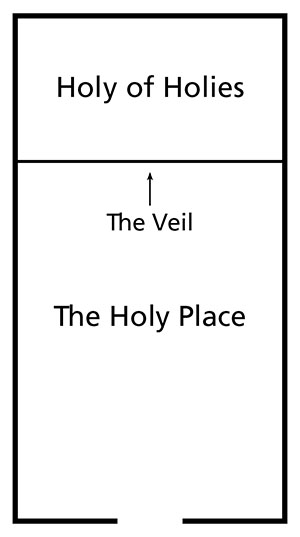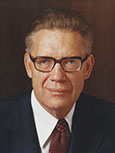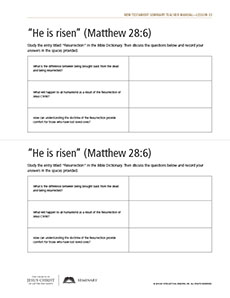Lesson 33: Matthew 27:51–28:20
Introduction
At the death of Jesus Christ, the veil of the temple was torn in two. Jewish leaders petitioned Pilate to guard the tomb where Jesus’s body was laid. Jesus Christ was resurrected and appeared to many individuals, including His Apostles. He commanded His Apostles to take the gospel to all the earth.
Suggestions for Teaching
Matthew 27:51–56
After the death of Jesus Christ, the veil of the temple is rent and the earth shakes
Ask students to think about whether they or someone they know have had someone close to them pass away. Then ask the class:
- • Why can losing a loved one be difficult?
Ask students to look for truths as they study Matthew 27:51–28:20 that will help them find comfort when a loved one passes away. To provide context for today’s lesson, you might ask students to briefly summarize what Jesus Christ experienced between the time He was arrested and when He was crucified.
Invite a student to read Matthew 27:51 aloud. Ask the class to follow along, looking for what happened in the temple when Jesus died.
- • What happened when Jesus died? (Invite students to look at Matthew 27:51, footnote b, to understand that “rent in twain” means “torn into two pieces.”)

Consider copying on the board the accompanying diagram of the interior of the temple.
Explain that during the time of Jesus, the temple had two rooms: the Holy Place and the Holy of Holies. The Holy of Holies represented the presence of God. These two rooms were separated by a veil, or curtain. Once a year, on the Day of Atonement, the high priest passed from the Holy Place through the veil of the temple and entered into the Holy of Holies, where he sprinkled the blood of a sin offering to atone for the sins of all the congregation of Israel (see Leviticus 16). When the veil of the temple was torn in two at the death of Jesus Christ, it was a dramatic symbol that Jesus Christ, the Great High Priest, had passed through the veil of death and would shortly enter into the presence of God the Father.
To help students better understand the significance of the tearing of the veil, invite a student to read aloud the following statement by Elder Bruce R. McConkie of the Quorum of the Twelve Apostles:

“The Holy of Holies is now open to all, and all, through the atoning blood of the Lamb, can now enter into the highest and holiest of all places, that kingdom where eternal life is found. … The ordinances performed through the veil of the ancient temple were in similitude of what Christ was to do, which he now having done, all men become eligible to pass through the veil into the presence of the Lord to inherit full exaltation” (Doctrinal New Testament Commentary, 3 vols. [1965–73], 1:830).
- • What important truth can we learn about the Atonement of Jesus Christ from the tearing of the veil? (After students respond, write the following truth on the board: Because of the Atonement of Jesus Christ, we can all enter the presence of God if we repent and keep our covenants.)
- • How does the Atonement of Jesus Christ make it possible for us to return to the presence of God?
Point out that although the Atonement of Jesus Christ makes it possible for us to return to God’s presence, we must do our part to be worthy to dwell with our Heavenly Father eternally.
- • What must we do to be worthy to dwell with Heavenly Father eternally?
Summarize Matthew 27:52–56 by explaining that after the Resurrection of Jesus Christ, many righteous people who had died were also resurrected and appeared to many people in Jerusalem. These verses also relate that among those who witnessed Jesus’s death were a Roman centurion and many women.
Invite a student to read Matthew 27:54 aloud. Ask the class to look for how the Roman centurion and those who were with him responded when they witnessed the events following the Savior’s crucifixion.
- • What was the response of the centurion and those who were with him?
- • What did they see that may have caused them to declare that “truly [Jesus] was the Son of God”?
Matthew 27:57–66
Jewish leaders conspire with Pilate to guard Jesus’s sepulchre
Summarize Matthew 27:57–61 by explaining that after the death of Jesus, a rich disciple named Joseph of Arimathea “begged [asked for] the body of Jesus” (verse 58). He wrapped Jesus’s body in a clean cloth, placed it in a tomb (or sepulchre) he owned, and then covered the entrance of the tomb with a large stone.
Invite several students to take turns reading aloud from Matthew 27:62–66. Ask the class to follow along, looking for what the chief priests and Pharisees requested of Pilate.
- • What did the chief priests and Pharisees request of Pilate?
- • Why did they desire this?
Matthew 28:1–20
Jesus Christ is resurrected and appears to many
Explain that early on the first day of the week, or Sunday, Mary Magdalene and another woman named Mary came to the tomb to anoint Jesus’s body as an expression of their love and adoration. Ask a few students to take turns reading aloud from Matthew 28:1–6.
- • What did the women find as they approached the sepulchre? (Explain that the Joseph Smith Translation clarifies that the women saw two angels, not one [see Matthew 28:2, footnote a].)
- • How would you have reacted if you had seen two angels? How did the guards react?
- • According to verses 5–6, what did the angels tell the women?
- • What truth do we learn from these words? (After students respond, write the following truth on the board: Jesus Christ was resurrected from the dead.)
“He is risen” (Matthew 28:6)
Study the entry titled “Resurrection” in the BibleDictionary. Then discuss the questions below and record your answers in the spaces provided.
What is the difference between being brought back from the dead and being resurrected?
| |
What will happen to all humankind as a result of the Resurrection of Jesus Christ?
| |
How can understanding the doctrine of the Resurrection provide comfort for those who have lost loved ones?
|
© 2015 by Intellectual Reserve, Inc. All rights reserved.
Ask a few students to share with the class what they learned by completing the handout.
Invite a student to read aloud the following statement by President Gordon B. Hinckley:

“The miracle of that resurrection morning, that first Easter Sunday, is a miracle for all mankind. It is the miracle of the power of God, whose Beloved Son gave His life to atone for the sins of all, a sacrifice of love for every son and daughter of God. In so doing He broke the seals of death. …
“And just as He took up His body and came forth from the tomb, even so shall all of us enjoy a reunion of body and spirit to become living souls in the day of our own resurrection.
“We rejoice, therefore, as do many, and as should all mankind, when we remember the most glorious, the most comforting, the most reassuring of all events of human history—the victory over death” (“The Victory over Death,” Ensign, Apr. 1997, 4).
Invite a student to read Matthew 28:7–10 aloud.
- • According to verse 7, what did the angels command the women to do?
- • Why do you think the women departed with “fear and great joy”?
- • What happened to the women as they went to tell the disciples about their experience?
Summarize Matthew 28:11–15 by explaining that while the women were hurrying to bring the disciples news of Jesus’s Resurrection, the chief priests heard what had happened from the soldiers who guarded the tomb. The Jewish leaders were afraid that people might learn the truth, so they paid the guards to spread lies that the Savior’s disciples had taken His body from the tomb while the guards slept.
Ask a student to read Matthew 28:16–18 aloud. Invite the class to follow along, looking for the blessing that came to the eleven Apostles when they obeyed the words of the women to go to Galilee.
- • What blessing came to the eleven disciples because they obeyed the words of the women?
Invite a student to read Matthew 28:19–20 aloud. Ask the class to follow along, looking for what the Savior commanded His Apostles to do after they saw Him.
- • What were the Apostles commanded to do after they had seen the Savior?
- • What can we learn from their experience about the responsibility we have as we gain a testimony of Jesus Christ? (After students respond, write the following principle on the board: As we gain a testimony of Jesus Christ, we have a responsibility to testify of Him to others.)
Invite students to come to the board and list ways we can testify of Jesus Christ to others. You may want to invite students to explain or give examples of the ideas they write. Then ask the following questions:
- • According to verse 20, what promise did the Savior give His Apostles?
- • In what ways has the Lord been “with you,” or helped you, in your efforts to share the gospel?
Encourage students to share their testimonies of Jesus Christ with others. To help them do so, ask students to use one of the ideas listed on the board to create a personal goal to testify of Jesus Christ and His gospel to family members, friends, and others. Invite students to write their goal in their class notebooks or scripture study journals.
 Scripture Mastery—Matthew 28:19–20
Scripture Mastery—Matthew 28:19–20
To help students memorize this scripture mastery passage, divide students into pairs and invite one member of each pair to write the passage on a piece of paper. Ask students to cut the paper in strips, leaving phrases from the scripture passage intact. Ask students to mix up the paper strips and then rearrange them in the proper order (referring to their scriptures as necessary). Challenge students to keep practicing until they no longer need to use their scriptures. Encourage students to remove one strip and recite the missing phrase from memory. After students have memorized one phrase, encourage them to remove another phrase and repeat both phrases from memory. Allow them to continue this process until they can recite the entire passage from memory.
Commentary and Background Information
Matthew 28:6. “He is risen”
President Ezra Taft Benson declared that no event is more important than the Resurrection of Jesus Christ:
“The greatest events of history are those which affect the greatest number for the longest periods. By this standard, no event could be more important to individuals or nations than the Resurrection of the Master. The eventual resurrection of every soul who has lived and died on earth is a scriptural certainty, and surely there is no event for which one should make more careful preparation. Nothing is more absolutely universal than the resurrection. Every living being will be resurrected” (“The Greatest Event in History,” New Era, Apr. 2004, 45).
Matthew 28:19. “Go ye therefore, and teach all nations”
Elder David A. Bednar of the Quorum of the Twelve Apostles taught that Church members can use social media to share the gospel:
“The Lord is hastening His work, and it is no coincidence that these powerful communication innovations and inventions are occurring in the dispensation of the fulness of times. Social media channels are global tools that can personally and positively impact large numbers of individuals and families. And I believe the time has come for us as disciples of Christ to use these inspired tools appropriately and more effectively to testify of God the Eternal Father, His plan of happiness for His children, and His Son, Jesus Christ, as the Savior of the world; to proclaim the reality of the Restoration of the gospel in the latter days; and to accomplish the Lord’s work” (“To Sweep the Earth as with a Flood” [Brigham Young University Campus Education Week devotional, Aug. 19, 2014], LDS.org).

沒有留言:
張貼留言